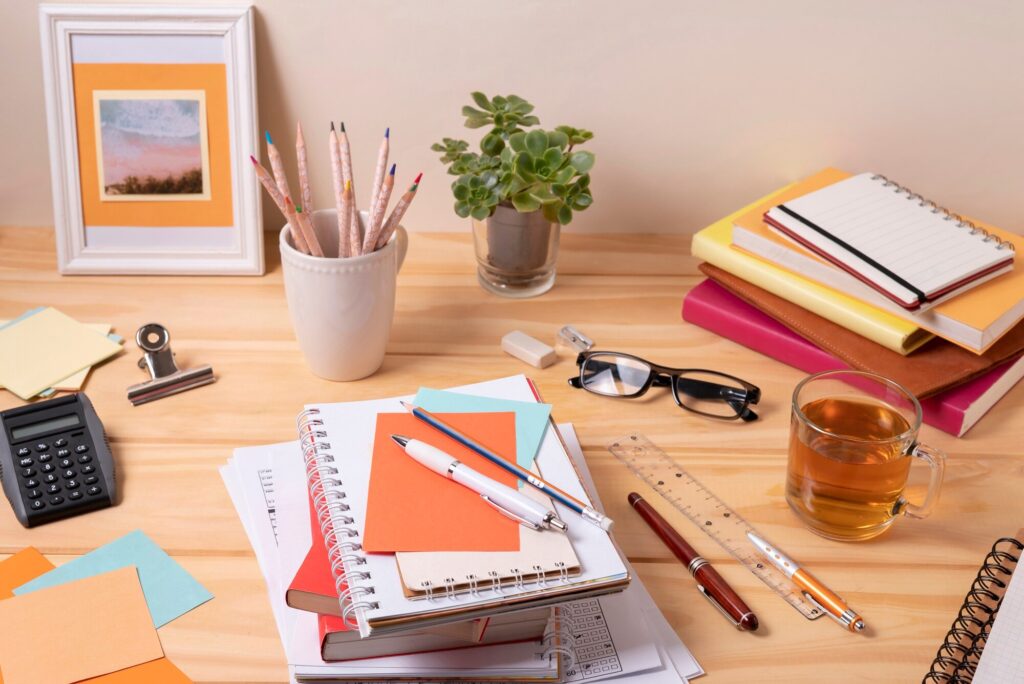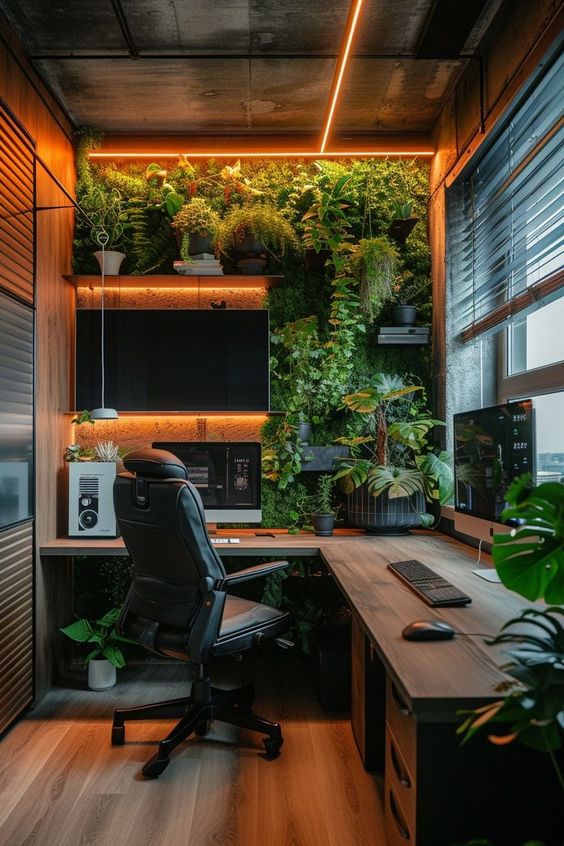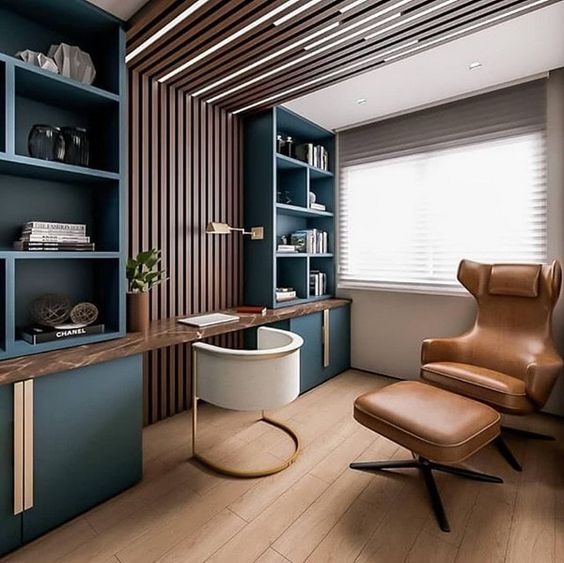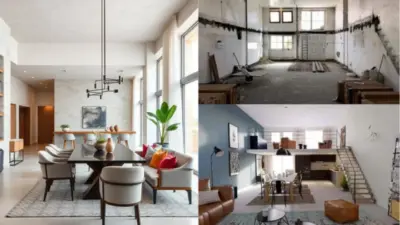
I. Introduction
In today’s fast-paced world, having a dedicated and well-organized learning workspace is more essential than ever. Whether you’re a student, a professional, or a lifelong learner, the environment in which you study and work can significantly impact your productivity, focus, and overall well-being. A cluttered and chaotic space can lead to distractions, stress, and inefficiency, while a beautifully designed and organized workspace can inspire creativity, enhance concentration, and make learning an enjoyable experience.
Creating a beautiful and organized learning workspace doesn’t have to be a daunting task. With a few strategic choices and the right tools, you can transform any area into an inviting and functional learning haven.
By the end, you’ll be well on your way to establishing a workspace that not only meets your needs but also fosters a positive and productive learning environment.
II. Organizational Tools
Creating a beautiful and organized learning workspace requires the right tools to keep everything in its place and ensure a seamless workflow. Organizational tools not only help maintain order but also enhance productivity and creativity. Incorporating storage solutions like shelves and drawer organizers can make a significant difference. Additionally, having a dedicated spot for essential resources, such as textbooks and digital devices, can streamline your study sessions. To ensure your workspace meets your academic needs, consider taking the Promova English level test to assess and address any gaps in your language skills, further optimizing your learning environment.
Here are some essential tools you should consider incorporating into your learning space:
A. Desk Organizers
Desk organizers are indispensable for keeping your workspace tidy and efficient. These tools come in various forms, including trays, drawers, and holders, tailored to fit different needs and preferences.
1. Pen and Pencil Holders: These holders ensure that writing instruments are always within reach and prevent them from cluttering your desk. Opt for holders with multiple compartments to separate pens, pencils, markers, and highlighters.
2. File Trays and Document Holders: These are perfect for organizing papers, notebooks, and folders. They help categorize documents by priority or subject, making it easier to find what you need quickly. Vertical file holders are also excellent for saving desk space.
3. Drawer Organizers: These dividers can be placed inside desk drawers to neatly arrange smaller items like paper clips, sticky notes, and USB drives. They prevent items from getting lost and keep everything easily accessible.
4. Cable Management Solutions: Cables from electronic devices can easily become tangled and unsightly. Use cable clips, sleeves, or boxes to keep them organized and out of the way, ensuring a neat and hazard-free workspace.
B. Bullet Journals
Bullet journals are a versatile and customizable way to keep track of tasks, assignments, and goals. They combine the functionality of a planner, diary, and to-do list, all in one convenient notebook.
1. Task Management: Use bullet journals to list daily, weekly, and monthly tasks. The bullet journal system employs symbols (bullets) to indicate tasks, events, and notes, making it easy to stay organized and prioritize effectively.
2. Goal Setting: Bullet journals are excellent for setting and tracking goals. Whether it’s academic achievements, personal development, or project deadlines, you can create dedicated pages to monitor progress and stay motivated.
3. Creative Expression: Beyond organization, bullet journals offer a creative outlet. Decorate pages with doodles, stickers, and color codes to make planning enjoyable and visually appealing. This personal touch can make your learning space feel more welcoming and inspiring.
C. Digital Tools
In today’s digital age, leveraging technology can significantly enhance the organization of your learning workspace. Digital tools offer the flexibility to access information and manage tasks from anywhere.
1. Productivity Apps: Applications like Trello, Asana, and Todoist help manage tasks, projects, and deadlines. These apps allow you to create lists, set reminders, and collaborate with others, ensuring that nothing falls through the cracks.
2. Note-Taking Apps: Digital note-taking tools such as Evernote, OneNote, and Notion provide an efficient way to organize and store notes. They offer features like tagging, searching, and syncing across devices, making information retrieval quick and easy.
3. Cloud Storage: Services like BOX, Google Drive, Dropbox, and iCloud enable you to store and share documents, photos, and other files securely. Cloud storage ensures that your important materials are always backed up and accessible from any device.
With a well-organized environment, you can focus more on learning and less on managing clutter.
III. Choosing the Right Location
Selecting the ideal location for your learning workspace is a critical step in creating an environment that fosters productivity and focus. The right spot can significantly impact your ability to concentrate and absorb information effectively.
Here are some key considerations to keep in mind when choosing the perfect location for your study area.
A. Quiet and Distraction-Free
One of the foremost factors to contemplate is the noise level of your chosen location. A quiet and distraction-free environment is essential for maintaining focus and ensuring that your study sessions are productive. Avoid areas that are prone to high traffic or constant interruptions, such as living rooms or kitchens.
Instead, opt for a secluded corner of your home where you can work without frequent disturbances. If finding a completely quiet spot is challenging, consider using noise-canceling headphones or white noise machines to help mitigate background noise.
B. Natural Lighting
Natural lighting plays a crucial role in creating a pleasant and invigorating workspace. Studies have shown that exposure to natural light can enhance mood, energy levels, and overall productivity. Aim to set up your learning area near a window where you can benefit from ample sunlight throughout the day. Position your desk perpendicular to the window to avoid glare on your screen while still taking advantage of the natural light. If natural light is limited, invest in high-quality artificial lighting that mimics daylight to help reduce eye strain and maintain alertness.
C. Adequate Space
Adequate space is another vital element to consider when designing your learning workspace. A cramped or cluttered area can hinder your ability to work efficiently and comfortably. Ensure that your chosen location provides enough room for all your essential furniture and equipment, including your desk, chair, and storage solutions.
By carefully choosing a quiet and distraction-free location with ample natural lighting and adequate space, you can create a learning workspace that is both beautiful and functional. This thoughtful approach to your environment will help you stay motivated, organized, and ready to tackle any academic challenge that comes your way.
IV. Essential Furniture and Equipment


Creating an effective and inviting learning workspace hinges on selecting the right furniture and equipment. These elements not only support physical comfort but also enhance focus and productivity.
Here’s a closer look at the key pieces you should consider:
A. Comfortable Chair
A comfortable chair is the cornerstone of any productive workspace. It’s essential to invest in a chair that provides adequate support for long study sessions. Look for features such as adjustable height, lumbar support, and a cushioned seat. An ergonomic design can help maintain proper posture, reducing the risk of back and neck pain.
Remember, your chair is not just a place to sit—it’s a foundation for your physical well-being during hours of learning.
B. Ergonomic Desk
An ergonomic desk complements your chair and ensures that your workspace is as functional as it is comfortable. The desk should be at a height that allows your elbows to rest at a 90-degree angle when typing or writing.
C. Functional Storage
Effective storage solutions are crucial for keeping your learning environment organized and efficient. Functional storage can range from bookshelves and filing cabinets to smaller items like drawer organizers and storage bins. The goal is to have a place for everything, so you can easily access what you need without disrupting your workflow. Consider modular storage options that can be customized and expanded as your needs evolve. With the right storage, you can minimize distractions and keep your focus squarely on your studies.
Incorporating these essential pieces of furniture and equipment into your learning workspace can make a significant difference in your overall productivity and comfort. Choose items that are not only functional but also aesthetically pleasing to create a space where you feel motivated and inspired to learn.
V. Conclusion
Creating a beautiful and organized learning workspace is more than just an exercise in aesthetics; it’s a strategic approach to enhancing productivity and fostering a positive learning environment. By carefully selecting and utilizing organizational tools, such as desk organizers, bullet journals, and digital solutions, you can streamline your workflow and maintain a clutter-free space. Choosing the right location, one that is quiet, distraction-free, and well-lit, further optimizes your ability to focus and absorb information.
Ultimately, a well-organized and thoughtfully designed learning workspace is a powerful tool that supports your educational goals. It not only enhances your efficiency but also contributes to a more enjoyable and sustainable learning experience. By taking the time to create a space that meets your unique needs, you are setting yourself up for greater success and a more fulfilling journey of lifelong learning.
- 0shares
- Facebook0
- Pinterest0
- Twitter0
- Reddit0



